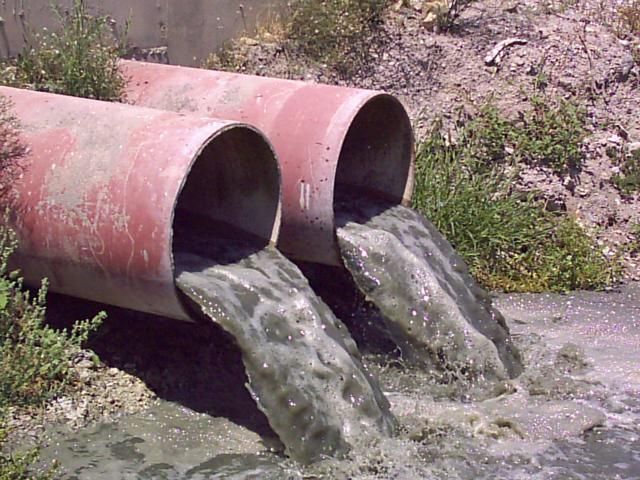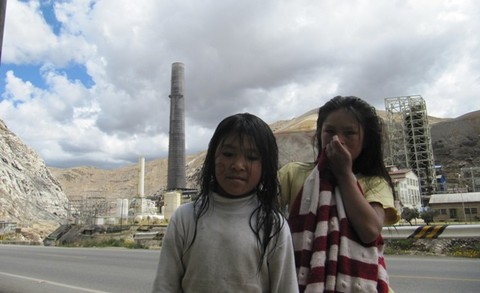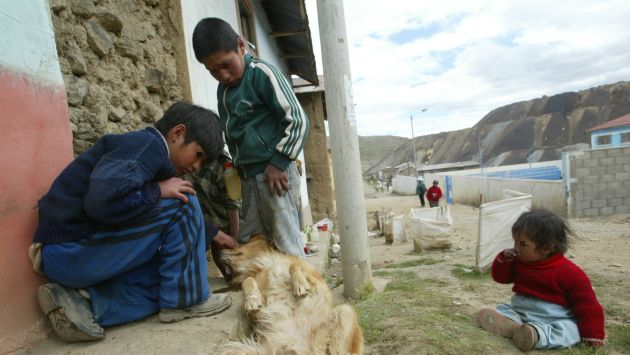Environment & Energy
Related: About this forumThe Andean Town at the Center of Peruís Pollution Dilemma
The Andean Town at the Center of Peru’s Pollution Dilemma
New president wants to ease air-quality rules and revive smelter whose closure gutted La Oroya’s economy

A view over the La Oroya smelter in central Peru. President Pedro Pablo Kuczynski wants to restart operations at the plant to revive the town’s economy. Photo: Ryan Dube/The Wall Street Journal
By
Ryan Dube
July 31, 2016 5:25 p.m. ET
LA OROYA, Peru—For years, the people of this bleak Andean town wedged between barren mountains have seen jobs disappear as operations at a smelter that once drove the local economy all but shut down.
Peru’s new president, former Wall Street executive Pedro Pablo Kuczynski, promises to change all that. But he says Peru needs to relax air-quality standards to attract investors to buy and restart the century-old complex, which processes mineral concentrates into high-value metals for export.
. . .
The smelter’s imposing smokestack, built in 1922, used to emit toxic fumes that poisoned residents and stunted the development of children, a problem so severe the town attracted researchers from around the world.
Hugo Villa, neurologist who worked in La Oroya for 30 years, found many babies were poisoned with lead while still in their mother’s womb.
More:
http://www.wsj.com/articles/the-andean-town-at-the-center-of-perus-pollution-dilemma-1470000338
eppur_se_muova
(36,266 posts)Only after they're done do you think of starting up that smelter again.
Judi Lynn
(160,542 posts)Information on the American owner of the plant, Ira Rennert
Rennert's company, the Renco Group, is essentially a holding group that owns other companies, such as WCI Steel,
Doe Run, and used to own AM General, manufacturer of the legendary Hummer. Ira Rennert, bought AM General for $133 million in 1992. Ronald Perelman, a Wall Street corporate raider, bought a 70 percent interest in AM General of South Bend, Indiana. The deal reportedly cost close to US$1,000,000,000. The company makes the military Humvee, as well as the Hummer H1 and H2 sold by General Motors. The Renco Group has been criticized for their record on pollution and worker safety.
. . .
The United States Environmental Protection Agency once placed Renco Group business holdings 10th on the nation's largest polluter list.<1>
In 2001, the Justice Department and EPA took action against Renco, filing suit against the company. The agencies demanded nearly $1 billion in fines, alleging MagCorp (a Renco Metals Inc. subsidiary) dumped toxic waste in ditches and ponds on the Great Salt Lake, Utah.<8> The suit claimed PCB-laced sludge and dust choked the plant's plumbing, wastewater ponds, landfill and ditches, where contaminants were 12 times the allowed limit for accidental release.<8> MagCorp maintained it was exempt from the federal federal Resource Conservation and Recovery Act, which requires companies to monitor certain kinds of hazardous waste.<8>
Peru
Doe Run, Peru, (a Renco Group holding) operates a smelting plant in La Oroya, Peru, where many of the same environmental violations that were present in Herculaneum, Missouri, are being visited on La Oroya's 12,000 children.<11> The Blacksmith Institute has placed La Oroya on its list of ten most polluted places in the world, along with Chernobyl, Ukraine.<12>
The Peruvian government originally sold the smelter to Doe Run in 1997. The site was already contaminated, but as part of the purchase agreement Doe Run Peru agreed to remedy a list of pollution-related problems by January 2007. Doe Run Peru couldn't meet the deadline and asked for and received a four year extension. In 2005, the company claimed to have cut air pollution by 25 percent and water pollution by 90 percent. Doe Run officials say they have spent more than $107 million to bring the smelter into compliance with Peruvian regulations.<12>
Meanwhile, thousands of children in La Oroya are suffering the effects of lead poisoning as hundreds of tons of toxins continue to spew from the smelting plant. A recent study by St. Louis University scientists found that 97 percent of children in La Oroya suffer from mental and physical deficiencies related to their exposure to polluted air.<12>
. . .
Ira Rennert and his wife, Ingeborg, contribute to numerous charitable causes, especially those centered around the Jewish faith. Nobel Peace Prize winner Elie Wiesel has called Rennert, "a deeply, deeply religious man".
Amongst other charitable giving, Ira and Ingeborg Rennert have:•Endowed a $2.5 million chair in Jewish studies at Barnard College
•Donated $5 million to establish the Wiesel Center at Boston University
•Given more than $1 million to the World Trade Center Memorial
•Established the Ira Leon Rennert Professor of Entrepreneurial Finance at New York University
•Endowed the Ira Rennert Professor of Business at Columbia University
•Founded the Rennert Center for Jerusalem Studies at Bar Ilan University
•Helped restore the Western Heritage Wall in Jerusalem (the visitor's center is called The Ingeborg and Ira Leon Rennert Hall of Light)
•Supported Lincoln Center with a $250,000 donation
http://en.wikipedia.org/wiki/Ira_Rennert
[center]
Ira Rennert, on the right.

Ira Rennert's house on Long Island.
At one time it was the most expensive
house in the United States.
~ ~ ~ [/center]
How can Marco become a great doctor if he has lead poisoning?
Marco <1> dreams of becoming a doctor someday. The only problem is that 99.9% of the children tested in his hometown of La Oroya, Peru have excessive lead levels, according to a recent Government study <2> and Marco has 5 times the maximum permissible level. Lead poisoning can cause learning problems, retarded growth, hyperactivity, kidney and liver disease, and neurological problems that are the stuff of nightmares for parents everywhere <3>. In La Oroya, the lead levels are so high that many children are born with lead poisoning, which is transmitted from mother to child through the placenta during pregnancy.
Marco’s hometown is the site of a large metal smelter owned by the Doe Run Company of St. Louis, Missouri. Each day, the smelter puts out more than 1000 tons of toxic emissions over the city. When Doe Run purchased the smelter in 1997, it promised to clean things up by January 2007, and the Peruvian Government approved the sale based on the Company’s promise. But now the Company has announced that it will not keep its promise and is threatening to close down the smelter if the Government does not provide it with a 5 year extension-- despite extremely favorable mineral prices <4>.
. . .
http://www.minesandcommunities.org/Action/press821.htm
[center] 
Rennert's house. [/center]
PERU: Pollution Emergency Plan Instead of Real Action for La Oroya
By Milagros Salazar
LIMA, Aug 10 (Tierramérica) - Far from halting the source that is poisoning the Andean city of La Oroya, which is home to the Doe Run smelting complex, the Peruvian government ordered a contingency plan for the days when air pollution is worst, as if it were dealing with a natural disaster.
The Contingency Plan for States of Alert will be presented Aug. 10 by the government's national environmental council, CONAM, which approved it Jul. 18 to protect the 35,000 inhabitants of La Oroya from the sulphur dioxide, lead and cadmium emissions from the Doe Run smokestacks. The plan is the result of two years of debates involving citizen groups, non-governmental organisations and the state agencies in charge of carrying it out, as well as representatives of the company, which will provide much of the financing.
La Oroya, 180 kilometres east of Lima, is one of the country's 13 most polluted cities, the government said in 2001. The New York-based Blacksmith Institute in 2006 included it in a list of the 10 worst cases in the world.
. . .
Once a state of alert is ordered, it will be recommended that the most vulnerable -- children, pregnant women, the elderly and people with respiratory or cardiovascular illnesses -- should not be outdoors between 9:00 am and 1:00 pm local time, the worst period of the day for exposure.
Doors and windows of homes, schools and hospitals should be closed, and food sold on the street should be covered.
The population in general should cover mouth and nose with scarves and handkerchiefs when outside. The idea of facemasks was ruled out because "people don't want images that further dramatise the situation," said Rojas.
More:
http://www.ipsnews.net/news.asp?idnews=38854
[center]http://3.bp.blogspot.com/__F-nwEcom5s/Ru16LBkzJiI/AAAAAAAAAc0/Z9yfAofesK4/s400/Calle+de+La+Oroya+-+O.jpg
 [/center]
[/center]
Toxic clouds hang over Peruvian town
U.S. company bought mine tied to poisonings
By Rebecca Howard

Updated: 9:52 a.m. CT Feb 9, 2004
LA OROYA, Peru - Standing outside his adobe house overlooking the huge American-owned smelter in this small Andean town, Pablo Fabian watches children play beneath a smoke cloud containing toxic lead, sulfur dioxide, cadmium and arsenic.
His hands tremble when he talks about his own children. Two of them are lethargic and have trouble concentrating, symptoms of lead poisoning. Fabian blames the smelter and is determined to protect his newborn baby girl.
. . .
Those findings led to a deal between Doe Run and Missouri’s government requiring the company to offer to buy 160 nearby homes. The buyout, which has yet to be completed, is one factor that may have helped drop the percentage of children with high levels of lead to 17 percent last year.
Leslie Warden, a leader in a Herculaneum activist group, visited last year to see Doe Run operations in Peru.
“They have defined a new low in my mind,” she said after her stay in La Oroya.
. . .
http://www.msnbc.msn.com/id/4145692 /
[center] [/center]
[/center]
La Oroya is a city in Junín Region, Peru. It is located at around 11°31?60?S, 75°54?0?W, at an altitude of about 4000 m. It was named in 2006 in a list of the 10 most polluted places on earth by the Blacksmith Institute, a US-based environmental charity <1>. Studies carried out by the Director General of Environmental Health in Peru in 1999 showed that ninety-nine percent of children living in and around La Oroya have blood lead levels that exceed acceptable amounts. The drinking water of La Oroya has been shown to contain 50 per cent more lead than the levels recommended by the World Health Organisation. These studies have also shown high levels of contamination of the air with 85 times more arsenic, 41 times more cadmium and 13 times more lead than is safe <2>.
These high levels of pollution are most likely caused by the presence of large scale refinery and smelting operations, a majority of which are owned and operated by the Doe Run Company which is a wholly owned subsidiary of the US corporation, Renco Group Inc. Doe Run is a major employer in the city and has used this powerful position to mitigate effective opposition to its poisoning of the air and water. This has involved high level lobbying with the cities ex-mayor and union leaders, who have successfully forced the Peruvian government to drop plans for pollution reduction measures <3>.
. . .
http://en.wikipedia.org/wiki/La_Oroya
[center]
The townspeople discovered when it's dark, or nighttime, the company
dumps its heavy laden metallic water into the river running through the
town.



